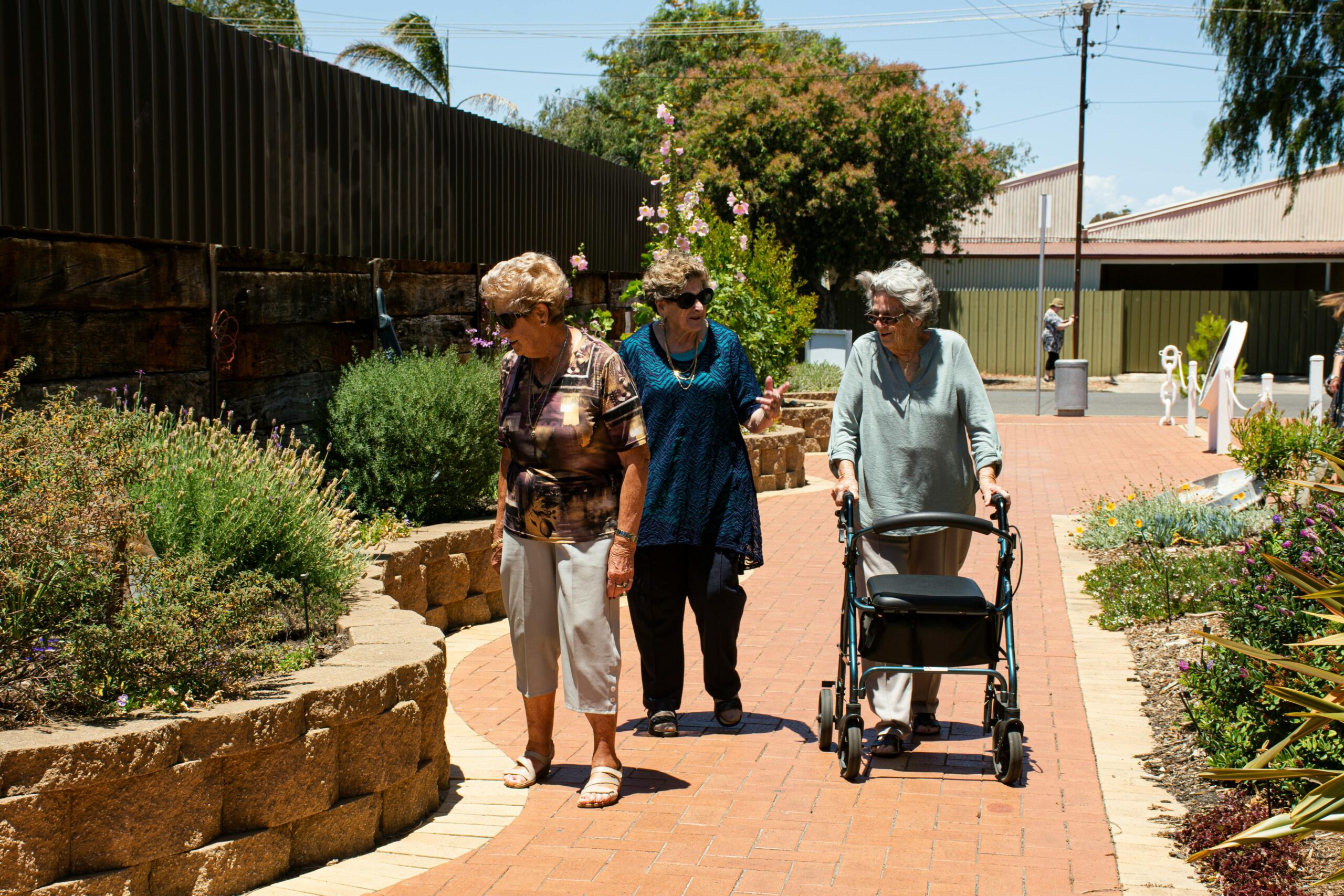Selecting from the best walkers for seniors can be difficult. But it is essential to improve mobility and independence of the elderly. From standard designs to advanced walkers, this article provides a simple overview of the top-rated walkers, focusing on crucial aspects such as stability, ease of use, and portability. We’ll help streamline your decision without overwhelming you, ensuring the walker you choose matches your personal mobility goals and preferences.

Types of Walkers for Seniors: Advantages and Disadvantages
When it comes to mobility devices, one size does not fit all. Walkers for seniors come in various styles, each with its unique set of advantages and potential drawbacks. Whether you’re looking for a basic walker to navigate narrow hallways or a rollator walker with all the bells and whistles for outdoor adventures, there’s something out there for you.
Becoming familiar with the types of walkers available, under the guidance of a physical therapist, paves the way to restoring your mobility.
Standard Walkers
Standard walkers, the most basic form of walkers for seniors, are the epitome of simplicity and reliability. They stand out for their lightweight design and ease of use, especially within the confines of home sweet home. Consider the Drive Medical Deluxe Portable Folding Travel Walker, a prime example of a standard walker that combines portability with a sturdy frame to support up to 300 pounds. However, for those who require additional support, a bariatric walker might be a more suitable option. Keep in mind that standard walkers do require a bit of upper body strength, as you’ll need to lift them for each step.
Two-Wheeled Walkers
If you’d rather not lift your wheeled walker with each step, two-wheeled walkers provide a suitable alternative. They glide forward with ease, thanks to the wheels on the front legs, allowing for a more natural walking rhythm. But watch out in tight spaces! Their wide turning radius and non-pivoting front wheels mean you might need to give them a little lift to get around corners.
Rollator Walkers
Rollator walkers, with their four wheels and built-in seats, are the Cadillacs of walkers for seniors. They’re designed for maximum comfort and ease, perfect for those longer trips outside when you might need a quick rest. Although they’re great for smooth maneuvering, rollators can encourage a downward gaze, which heightens the risk of missing an obstacle in your path.
Upright Walkers
Upright walkers, including the popular upright walker model, are the new kids on the block, engineered to promote an ergonomically correct posture. These walkers help reduce the strain on your back, neck, and shoulders, making them a favorite recommendation by physical therapists like Sally Russell.
However, their larger frames can sometimes make them less nimble than their rollator counterparts.
Factors to Consider When Choosing Walkers for Seniors
Choosing the right walker for adults entails finding a balance between desired features and necessary support. To zero in on the best walker for you or your aging parent, consider these essential factors:
- Weight capacity
- Height adjustment
- Wheels
- Portability
- Price
Let’s dive into how each element plays a crucial role in your decision-making process.
Weight Capacity
The weight capacity of the walker for seniors is essential for securing safety. It must be sturdy enough to support your weight without buckling. While some models can support up to 300 pounds, others max out at 250 pounds, so it’s crucial to check the specs before you buy.
Always prioritize your safety by ensuring the walker you choose can comfortably handle your weight.
Height Adjustment
A walker of inappropriate height can cause discomfort or potentially lead to injury. The height of the handles should be adjustable to match your stature, keeping your arms at a comfortable angle and your posture upright. When adjusted properly, the handles should align with your wrists when you stand tall.
Some walkers cater to a broad range of heights, while others are designed with specific height ranges in mind.
Wheels
The dimensions and variety of wheels on your walker can significantly impact its performance. Larger wheels tend to fare better outdoors and over rough terrain, while smaller ones are ideal for indoor use and maneuvering in tight spaces.
Standard walkers for adults without wheels require more effort to use on uneven surfaces, as they need to be lifted and moved forward. On the other hand, wheeled options like the upright walkers with large, all-terrain wheels ease movement across various outdoor surfaces.
Portability
If you’re frequently on the move, the portability of a walker becomes a critical factor. You’ll want a model that folds easily and fits into the trunk of a car or a storage closet. Some walkers, like the Able Life Space Saver Walker, fold down to a fraction of their size for ultra-convenience. However, remember to consider the weight of the walker itself; heavier models may be harder to lift and carry.
Price
Finally, let’s talk about the price tag. Though opting for the cheapest walker might be tempting, it’s vital to strike a balance between cost and necessary features. Walkers like the Nitro Euro Style Rollator Walker may come at a premium, but they also offer enhanced features and design benefits that justify the higher cost.
When you´re choosing the best walker for seniors, always weigh the long-term value against the initial investment to make the best choice for your budget and needs.

Top 3 Best Walkers for Seniors
Having covered the types of walkers and what to look for, it’s time to reveal the stars of the show: the top 3 best walkers for seniors in 2024. These models have been handpicked based on:
- Safety
- Ease of use
- Appearance
- Warranty
- Customer support
to offer you nothing but the best.
Drive Medical Nitro Euro Style Rollator Walker
The Drive Medical Nitro Euro Style Rollator Walker is a standout with its sleek design and large front casters for superior handling. It’s not just about looks; this walker is lightweight yet durable and comes with a plush seat and adjustable handles for a comfortable fit for any user.
It’s ready to roll right out of the box and even though it might be on the pricier side, its style and functionality are unmatched.
Medline Posh Premium Walker with Wheels
Who says walkers for the elderly can’t be stylish? The Medline Posh Premium Walker bursts onto the scene with a bright pink frame and zebra print storage bags that make a statement while keeping personal items secure. It’s the perfect combination of fashion and function, complete with a built-in cosmetic mirror for that last-minute check before you take on the day.
Able Life Space Saver Walker
For those needing a bit more support, the Able Life Space Saver Walker boasts the following features:
- 400-pound weight capacity
- Crafted from high-grade aircraft aluminum, making it light and strong
- Folds down easily for storage or transport
- Textured handles ensure a firm grip, making it a practical choice for everyday use.
Maintaining Your Walker: Tips and Tricks
Walkers for seniors can act as a trusty companion, provided it is well-maintained. Regular maintenance is key to ensuring your walker stays in tip-top shape and ready to support you on your daily adventures.
Cleaning
Keeping your walker clean is not just about appearances; it’s about hygiene and functionality. Wipe down the handles regularly and check the wheels for any debris that might hinder smooth movement.
A clean walker is a happy walker, and this applies to most walkers, including rolling walkers and traditional walker.
Inspection
Similar to other equipment, your walker necessitates regular inspections. Inspect it for signs of wear or damage, especially before and after you use it. This preventive maintenance can help you avoid any surprises and ensure your walker is always ready to go when you are.
Replacement Parts
From time to time, you may need to replace parts on your walker to keep it in good working order. Keep an eye on the tread of the wheels, the integrity of the seat, and the responsiveness of the brakes. When in doubt, visit your local medical supply store or check your walker’s warranty for guidance on getting the necessary parts.
Storage
Storing your walker in a dry, indoor area when not in use can protect it from potential environmental damage. This will help to keep it in good condition. A proper storage spot will not only prolong the life of your walker but also keep it out of the way and ready for your next outing.
Medicare Coverage and Financial Assistance for Walkers for adults
Dealing with the financial aspects of mobility aids can pose challenges equivalent to selecting a suitable mobility aid. Thankfully, there are resources available to help lighten the load.
Medicare Part B
Medicare Part B can be a lifesaver for those who need a walker. It covers 80% of the cost for medically necessary equipment, including walkers with seats if your doctor prescribes one. You’ll still be responsible for the remaining 20%, but it’s a big help in managing the costs.
Medicaid, Veteran’s Administration, and State/Local Governments
Beyond Medicare, Medicaid can step in to assist with the cost of walkers for adults, provided they meet certain requirements. Veterans may also find support through the Veteran’s Administration, and some state or local government programs offer additional assistance. It’s worth exploring all your options to ensure you get the help you need.
Summary
To wrap things up, choosing the right walker for seniors is about more than just getting from point A to point B. It’s about finding a mobility aid that fits your lifestyle, supports your independence, and ensures your safety. Whether you opt for the sleek Nitro Rollator for its design and features, the stylish Medline Posh for its fun flair, or the sturdy Able Life Space Saver for its strength and portability, remember to maintain it well and explore financial assistance options to make the most of your investment. Stay mobile, stay independent, and keep walking tall!
FAQ
If you need to stop and rest often, a rollator could be a better choice for you as it provides a seat and back support, unlike a standard walker
An upright walker is different from other walkers because it is designed with ergonomics in mind, promoting good posture and reducing strain on the back, neck, and shoulders. This makes it a popular choice for those with posture-related concerns.
No, it’s best to use a walker with larger wheels, such as a rollator or upright walker, for uneven outdoor surfaces, as standard walkers are more suited for flat, even indoor surfaces.
Yes, rollator walkers are suitable for those who need to rest frequently, as they come with built-in seats for taking breaks during walks.
The weight capacity is critical when choosing a walker to ensure safety and durability. Always make sure the walker can support your weight.
